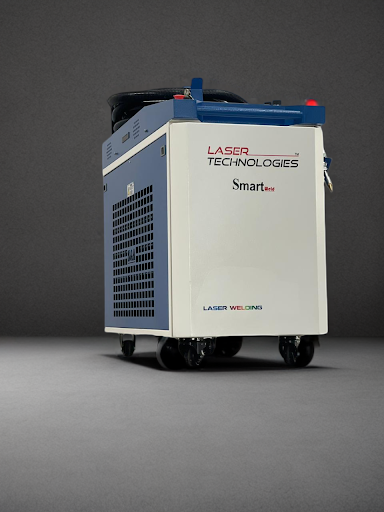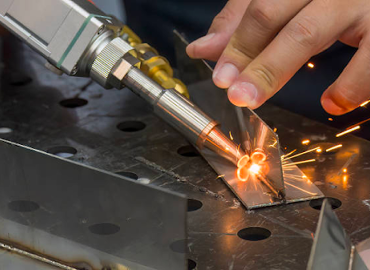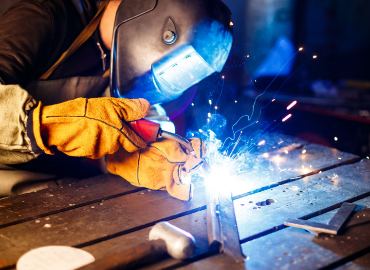Table of Content
- Introduction
- What Materials Can Be Welded Using A Laser Welding Machine?
- What are the Applications of Laser Welding Machines?
- Advantages Of Laser Welding Machine
- Why Choose Laser Technologies?
- How Laser Technologies Supports After-Sales Needs?
- Conclusion
Introduction
Accuracy and speed are essential to keep ahead of the competition in today's production environment. Industrial applications of laser welding have become increasingly popular due to their ability to provide precise and high-quality welds in a fraction of the time compared to traditional welding methods. This technology is commonly used in the automotive, aerospace, electronics, medical devices, and even jewellery manufacturing industries.
Laser welding applications make it a popular choice for joining materials with minimal heat-affected zones and distortion. Industries worldwide are using laser welding machines due to better performance, saving costs, and increased production capacity.
Laser Technologies, a leader in laser-based solutions, offers contemporary systems like the Smartweld Laser Welding System that redefined the standards for industrial welding. With its user-friendly interface and advanced features, laser welding has many applications across industries. By investing in laser welding technology, companies can achieve higher productivity.
What Materials can be Welded using a Laser Welding Machine?
Laser welding can be utilized to weld a lot of materials, which include dissimilar metals, composite metals, etc. Dissimilar metals include copper-nickel, brass copper, low-carbon steel, titanium aluminum, titanium nickel, titanium-molybdenum, and titanium copper. However, developing a metallurgic bond at the weld seam for dissimilar metals might be challenging, but this can be done by building a mechanical entrapment.
This is defined as the assortment of dissimilar metals to make sure that they are held together in a physical manner with sufficient mechanical stability to guarantee a strong connection, and this can be accomplished by physically huddling the two metals jointly and utilizing a sequence of laser pulses in order to work them out together.
Moreover, laser welding can also be utilized to weld composite substances, glass, and ceramics. However, when it comes to welding ceramics, it might be a complicated process because one needs to ensure that the substance does not crack when operated under high temperatures. To avoid this situation from occurring, preheating is essential.
What are the Applications of Laser Welding Machines?
Which industry relies heavily on laser welding for precision work? Laser welding applications can be seen in automotive manufacturing, the aerospace industry, medical device fabrication, electronics production, and many more. There are many applications of laser welding due to its ability to provide precise and high-quality welds in a variety of materials, making it a versatile and efficient tool for industries seeking to improve their manufacturing processes.
1. Automotive Manufacturing
The automotive industry is one of the largest adopters of laser welding technology. Its ability to create precise, high-strength welds makes it indispensable in manufacturing car components. Laser welding is commonly used for joining:
- Body panels and doors
- Chassis and structural components
- Powertrain components
With laser welding, manufacturers achieve seamless joints that enhance the structural integrity of vehicles while reducing material deformation and production time. The speed and precision of laser welding contribute to lighter, more fuel-efficient vehicles, aligning with modern environmental standards. Laser Technologies solutions are designed to deliver precision and ease of use, enabling automotive manufacturers to meet the high demands of this fast-paced industry.
2. Aerospace Engineering
Aerospace is another industry where precision and reliability are paramount. Components in aircraft must withstand extreme conditions, requiring welding solutions that ensure durability and flawless execution. Laser welding is used in the aerospace sector for applications such as:
- Fuel tanks and hydraulic systems
- Turbine blades and engine components
- Lightweight structural assemblies
The non-contact nature of laser welding minimizes the risk of contamination, making it ideal for the aerospace industry. Moreover, its ability to work with complex geometries ensures consistency and quality in critical components.
At Laser Technologies, we provide tailored laser solutions and expert support, ensuring your aerospace manufacturing processes meet the stringent standards of this demanding sector.
3. Medical Device Manufacturing
The medical industry demands the highest level of precision and cleanliness in its manufacturing processes. Laser welding is the go-to technology for producing delicate and intricate components, including:
- Surgical instruments
- Medical implants
- Diagnostic equipment
Laser welding’s ability to produce clean, micro-precise welds without introducing contaminants is critical in the medical field. Manufacturers achieve flawless results even in the most delicate applications with the help of advanced laser systems.
Choosing Laser Technologies means partnering with a company that understands the unique challenges of medical device manufacturing and offers robust after-sales support to ensure uninterrupted operations.
4. Electronics and Electrical Equipment
As the world becomes increasingly digitized, the demand for smaller, more precise electronic components continues to grow. Laser welding plays a pivotal role in manufacturing electronics, providing solutions for:
- Circuit boards
- Battery connections
- Microelectronic packaging
The high precision of laser welding ensures minimal thermal distortion, which is essential for sensitive electronic components. The advanced features of Laser Technologies welding systems make them a pioneer in the laser welding machine market.
5. General Metal Fabrication
Metal fabrication covers a broad range of applications, from construction to consumer goods. Laser welding is widely used for:
- Structural steel components
- Metal furniture
- Custom metal parts
Handheld Laser Welding vs. MIG Welding—Discover the Best Fit for Your Needs!
Advantages of Laser Welding Machine
The primary Advantage of Laser Welding is that it provides amazing precision and efficiency. Dissimilar to traditional welding procedures, laser welding processes can be executed without utilizing any additional fixtures or equipment. The outcome of laser welding is extremely precise compared to other possible methods.
In addition, lasers have the capability to attain exceptionally high temperatures, and they also can produce strong and enduring welds that can withstand severe environments and extreme temperatures. Ultimately, because of its highly automated nature, it demands minimal manual labor when compared to other types of welding techniques, and this feature can lead manufacturers to save labor expenses. Let's have a quick read about the benefits of laser welding:
- Heat-affected Zone: In the laser welding process, the heat-affected zone is restricted, and because of rapid cooling, the surrounding area of the material is not thickened.
- Weld Strength: The laser weld is thin and narrow with an outstanding depth-to-width ratio and increased stability as well as strength.
- High Precision: The laser welding process delivers precision work, and the tiny, strictly controlled laser beam enables precise micro-welding of small substances.
- Metals: Lasers are successfully able to weld stainless steel, high-strength steel, aluminum, titanium, carbon steel, and various other types of metals.
- Deformation: Components have zero to less deformity or disfigurement.
- No contact: There is zero physical contact between the workpiece and the laser head.
Transform Your Welding Process - Explore Our Air-Cooled Handheld Laser Solutions!
Why Choose Laser Technologies?
Laser Technologies stands out as a trusted partner for businesses seeking reliable, high-performance laser solutions. Here are some key reasons to choose us for various applications of laser technology:
1. Innovative Products
Our systems are designed with cutting-edge technology to deliver precision and ease of use.
2. Cost-Effective Solutions
We understand your budget constraints and provide solutions that maximize ROI.
3. Exceptional Support
From installation to training and after-sales service, our team ensures you get the most out of your investment.
4. Industry Expertise
With years of experience serving diverse industries, we understand the unique challenges of each sector and provide tailored solutions.
How Laser Technologies Supports After-Sales Needs?
At Laser Technologies, we believe in building long-term partnerships with our clients. Our after-sales services include:
- Comprehensive Training Programs to ensure your team operates the systems efficiently.
- Prompt technical support to address any issues.
- Regular maintenance services to keep your systems running at peak performance.
- Availability of Spare Parts and accessories for minimal downtime.
With our customer-centric approach, you can focus on your core operations in terms of production.
Conclusion
Laser welding has revolutionized the welding process in industries, making it a popular choice for various applications across different sectors. From automotive manufacturing to medical device production, its applications are vast and transformative. Laser Technologies, with its innovative solutions, is leading the charge in delivering world-class laser systems.
By choosing Laser Technologies, you’re not just investing in contemporary equipment but also getting ahead in terms of advanced manufacturing practices. Explore the full range of our products and services at Laser Technologies, and take your manufacturing capabilities to the next level.






